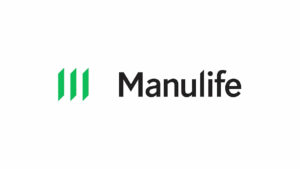Younger Filipinos now more aware about the need for insurance, Manulife Philippines says

THE MANUFACTURERS Life Insurance Co. (Phils.), Inc. (Manulife Philippines) expects younger generations to make up a bigger share of the insurance market amid increasing awareness about the need for protection due to growing wellness concerns.
“If you look at the overall demographics of the Philippines, we have a very young population, and hence, we as an insurance company are always, through our product design, through our communication strategy, through the propositions that we provide to our customers, we are targeting these customers in that age bracket,” Manulife Philippines President and Chief Executive Officer Rahul Hora said at an event on Tuesday.
“[They aren’t the largest portion of the market right now,] but we are seeing an increasing trend with the increased awareness that these age groups have,” he added.
A recent Manulife Philippines study titled “In Wellness and In Health: Navigating the landscape of health, well-being, and financial preparedness in the Philippines,” which covered 1,000 Filipino consumers, showed that young Filipinos are dealing with wellness concerns, highlighting the need for insurance coverage, he said.
Filipinos aged 18-29 years old said their average number of sick days a year was at 3.4, higher than the 2.7 average for all respondents, the study showed.
Those aged 30-39 years old felt sick 2.7 times over the last 12 months, while respondents who were 40-49 years old had an average of two sick days. Lastly, those in the ages of 50-55 years old were sick 1.9 times a year.
The study showed the top five illnesses Filipinos are worried about are diabetes (36%), anxiety (36%), depression (35%), heart disease (34%), and cancer (26%).
Concerns about anxiety and depression were also more common with the younger generation and with females, the report said.
This was due to Filipinos not getting enough sleep (28%), believing that following a regular exercise routine is expensive (68%), and thinking that changing their current lifestyle would mean changing their social life which is difficult (50%).
Some 33% of the respondents said their current lifestyles were unhealthy. This was more prominent among lower middle-income households (46%), while only 31% and 29% of middle-income households and upper-income households, respectively, admitted having unhealthy lifestyles.
“I think the first thing that was quite encouraging was that overall, there is awareness. There is awareness and appreciation,” Mr. Hora said.
On the other hand, 24% of the respondents said they do not know what a healthy diet is, while 34% said they do not have time to think about their diet.
Respondents said they were unable to commit to a healthy lifestyle as 54% of them believe that healthy eating is more expensive, 46% think healthy food does not taste good, and 35% said healthy food is hard to prepare or not easy to find.
“Another couple of myths that came up, which were quite surprising, was that 25% of respondents actually believed that critical illness can only happen to you when you’re middle-aged or older,” Mr. Hora said. “Another surprising myth that came up was that 21% still think that eating habits and nutrition have little or no impact on children’s mental development.”
For exercising, 40% said exercise is always painful or takes too much effort, 38% said they are too busy, while 37% said they do not know what type of exercise is appropriate for them.
“It’s not easy to find ways of exercising. There are not even certain parks around to walk and in a safe environment. So, even if they would want to commit, accessibility continues to be a challenge for our customers as far as exercising is concerned,” Mr. Hora said.
Another key finding was that 41% of respondents’ medical spending was out of pocket.
“This figure, over the years, we’ve seen it declining, which is good news. A few years back, this figure was as high as 52%. But either way, it’s extremely high,” Mr. Hora said.
Broken down, 82% of respondents said they source their funds from personal savings, 26% from health maintenance organizations, and 22% via loans from family and friends.
“Now imagine the impact that this has on their own financial well-being because these savings were probably meant for something else. These savings were probably meant for their children’s education, for other meaningful expenditures that they were planning for but it had to be consumed for a medical expense,” Mr. Hora said.
“If you ask them what is the amount of savings that they have at this point of time, they are in the range of about P38,000. That’s the amount of savings they have with them to deal with any medical expense. How much they would need is about in the range of P75,000 to P80,000. So, that’s the gap that they will have to fill out if anything was to happen to them at this point of time,” he said. “Even if you quantify this gap that we were talking about, it’s quite a significant gap. Where they are and where they need to be, there’s a huge financial gap that we need to fill.”
Manulife Philippines’ premium income stood at P15.54 billion in 2023. Its net income was at P1.899 billion. — A.M.C. Sy




